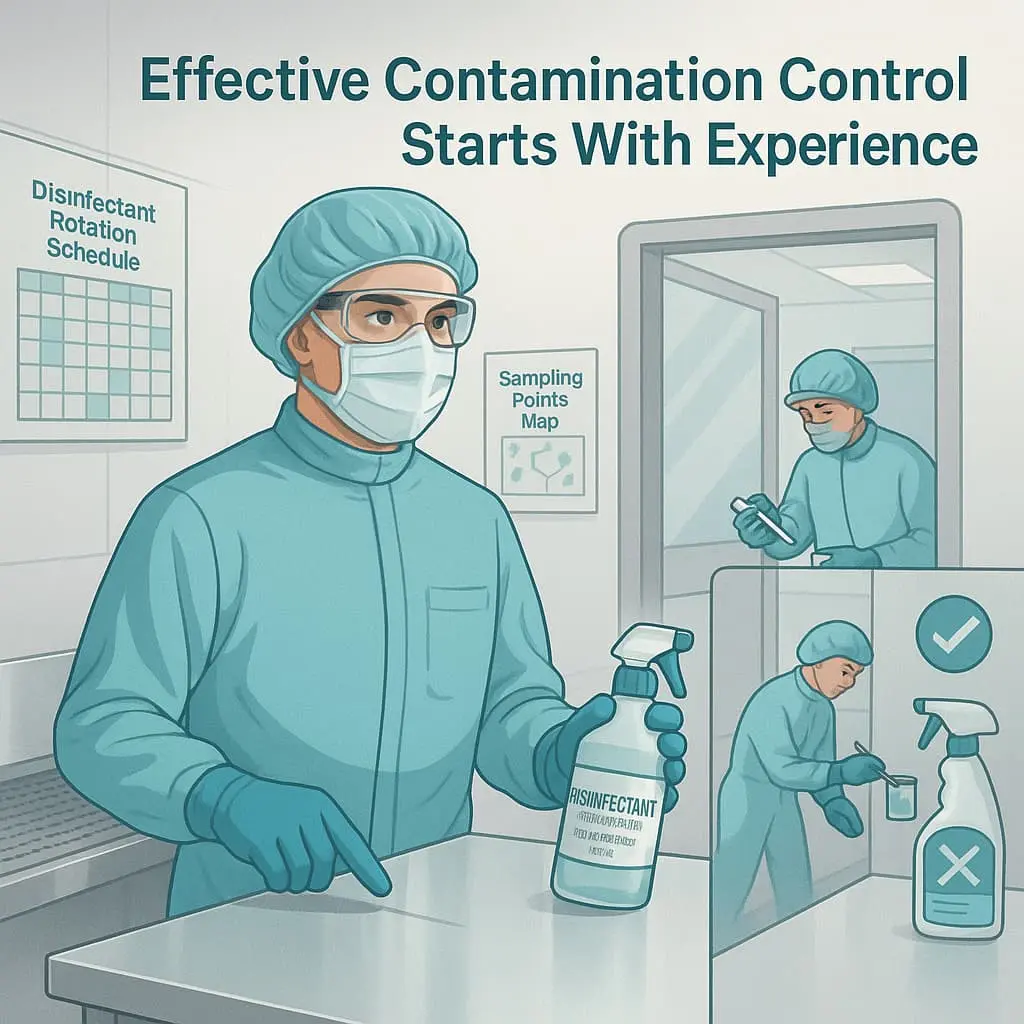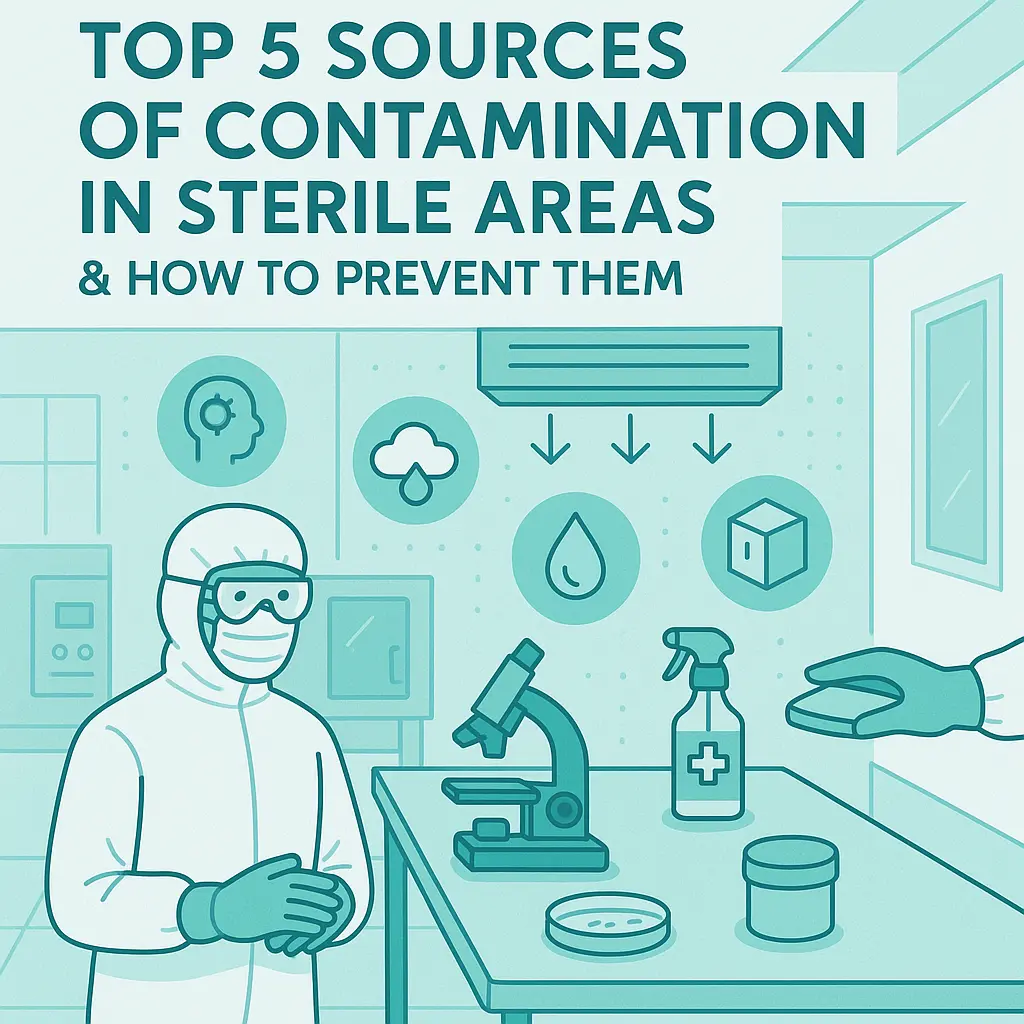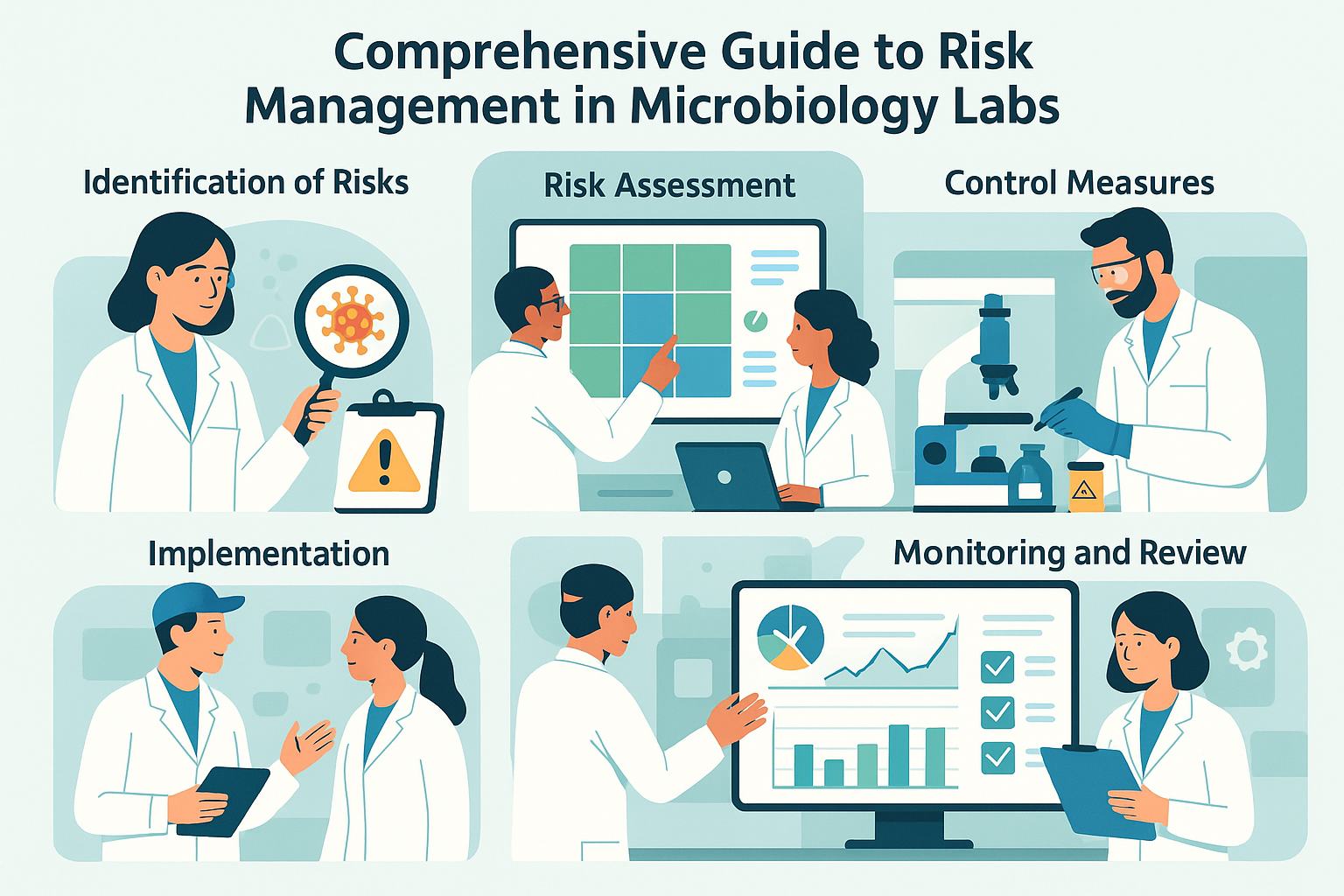Introduction
Comprehensive, risk-oriented microbiological contamination management programs are being adopted across the sector to enhance patient safety and elevate the quality of process control and product standards
These diverse programs combine various contamination control elements such as:
- Cleaning and sanitization
- Environmental monitoring
- Personal protective equipment
- Facility design and upkeep
All-encompassing program tailored to the specific processes and products produced. They also signify a shift in perspectives on the most effective ways to establish and sustain a successful contamination control approach. This change in mindset directly affects microbiologists tasked with overseeing the effectiveness of the facility’s contamination control efforts.
The Contamination Control Strategy as a Puzzle
A contamination control strategy is like a puzzle:
- Each component (cleaning, PPE, EM, etc.) is a piece
- All pieces must align to complete the picture to attain the intended outcome
The advantages of one element can offset the weaknesses of another; thus, the microbiologist needs to possess a comprehensive knowledge of each element to ensure that there are no absent elements or voids in the puzzle. However, after this comprehension is obtained, a properly structured contamination control strategy can serve as an effective instrument in maintaining a strong and ongoing level of microbiological control within the facility.
It begins with a comprehensive grasp of the production process and the surrounding conditions.
Understanding the Process and Environment
The microbiologist needs to possess a comprehensive and detailed knowledge of the procedure and the surroundings in which it takes place to determine stages or areas where contamination is more likely to happen.
Microbiologists must determine risk-prone areas, including:
- open processing stages or stages where transfers or sterile connections occur
- Operator-involved stages
- Complex, multi-step procedures
- processes taking place in older facilities where management techniques might be more restricted because of the design of the facility (e.g., a Grade A biological safety cabinet (BSC) or Laminar Flow Hood (LFH) set against a Grade C background environment).
- new procedures, or recent alterations in processing
Risk Evaluation and Patient Safety
The microbiologist should also possess a thorough comprehension of the dangers linked to the procedure and be capable of precisely evaluating the possible effects of those dangers on product integrity and patient safety, as well as recognizing and implementing changes when needed to lessen the risks.
- The degree of acceptable risk will differ depending on:
- Nature of process/product
- Product indication
- Target demographic
Example: Advanced Therapy Medicinal Product (ATMP)
For instance, take into account an advanced therapy medicinal product (ATMP) like an autologous cell therapy. Occasionally, the unique requirements of patients necessitate that the product be produced, evaluated, and given to the patient within a week or even sooner.
Generally, results from environmental monitoring are not finalized until after a seven-day incubation period has passed, meaning that accurate identification of isolated microorganisms is not accessible before the product can be released. Likewise, based on the approachdepending on the method used (i.e., conventional vs. expedited), the outcomes of sterility testing typically take seven to fourteen days to be accessible.
Mycoplasma testing may require as long as twenty-eight days before the results of the assay are ready. Should any anomalies arise during processing, they need to be assessed, and the risk to the patient evaluated before the investigation is entirely finalized.
Need for Proactive Control
With production timelines like these, taking proactive steps to avoid the ingress of microorganisms is crucial.
- An exceptionally high-quality, resilient, efficient, and risk-oriented contamination control plan is critical to guaranteeing patient safety and product integrity
- Although a strong and efficient contamination control plan is crucial for conventional manufacturing situations, the majority of these items can be retained until all outcomes and deviation inquiries are finalized and resolved before being provided to the patient.
Ethical Considerations in Risk Assessment
- Product indication influences risk evaluation:
- Does the product maintain or extend life?
- Is it intended for palliative care?
- Are there other treatment choices or alternatives available for the patients?
- Is the patient immunocompromised or weakened due to their current health status?
- Is the risk justified by the patient’s requirements?
- Frequently, there are significant ethical concerns that need to be addressed during these risk evaluations.

Microbiologists on the Manufacturing Floor
- It is critical for the microbiologist to not only understand the process design and intended operations, but to personally experience how all of the process steps and interventions are conducted in real-time and how well each component of the contamination control program performs in conjunction
- There are many minute operations or smaller-scale procedures that can have a major impact on the microbiological risk to the integrity of the process and product quality that cannot be sufficiently addressed in a classroom setting or written procedures.
- Visually observing how operations are performed can often be equally or more important than a written description of what is to be conducted. It is the “little things” that are often the most critical.
- Example:
- Manual sanitization of materials entering cleanrooms or BSCs
- How a manufacturing operator physically disinfects material(s) for subsequent entry into a clean room or BSC is critical to the efficacy of that decontamination step. Is enough agent being applied?
- Is the application thorough?
- Is the required wet contact time being maintained?
- Manual sanitization of materials entering cleanrooms or BSCs
Practical Observation for Control Effectiveness
- Microbiologists with technical knowledge and hands-on experience:
- Can evaluate activities better than non-experts
- Observations made when on the manufacturing floor are very important to the continuous improvement of the contamination control program
- They allow the microbiologist to suggest and drive improvements to each of the program components, thus making the larger, holistic program more robust and effective.
- In the previous example, if the cleaning and disinfection of items to be transferred into the cleanroom or BSC is found to be deficient in any way, the microbiologist can remediate the deficiency through improvements and/or clarifications in training and standard operating procedures, etc. and thusly increase the overall efficacy of the cleaning and disinfection component. In this way, the microbiologist can assess and improve the other components of the contamination control program, including gowning practices, application of aseptic techniques, cleanroom behaviors, impact of operator interventions, etc.

Root Cause Investigations and CAPA
An in-depth working knowledge is critical to ensuring successful root cause analyses and practical, effective corrective and preventative action (CAPA).
Microbiological deviations and/or investigations, particularly those related to environmental monitoring excursions, are notoriously difficult to conduct, as it often discovered days later, and usually caused by common flora (skin/environmental) that can be easily transferred by operators to manufacturing materials or vice versa
As a result, there is usually a myriad of possible root causes for the event, and the resulting investigation often contains a fair amount of speculation as to how the contaminating organism might have entered the processing train or surrounding environment.
However, if the microbiologist possesses the in-depth knowledge of how the process is actually conducted and where potential contamination risks exist or may be elevated (e.g., steps that require a greater degree of human intervention, especially those that are more intricate or difficult to perform or the presence of a brand new, inexperienced operator, etc.), not only will the correct investigative path become more clear, but the ascertained root cause will be better supported with data and science-based rationale.
In-depth knowledge of the process, the contamination control program and how they integrate in real-time is essential for successful trending data analysis.
Trending Data and Risk-Based Decisions
A solid, well-designed, and useful trending program is an invaluable tool for the microbiologist. Such a trending program includes robust and thoughtful data analysis. However, to develop such a trending program, one first needs to know what specific information is required. A thorough understanding of the interaction between the process and the contamination control program is essential for proper data analysis
Important questions include:
- Have excursions in microbial counts been increasing in a given area?
- Has there been an increase in recoveries of a particular organism type, such as a spore-former?
- Are new microorganisms/floras being recovered?
- Was CAPA successful?
- Is the same pattern occurring in areas of similar activity or room classification?
- Has anything changed?
Value of a Strong Trending Program
A well-designed trending program that includes critical data analysis not only aids the microbiologist in identifying issues. It can also help to indicate why a problem is occurring through the elucidation of patterns throughout the facility. This, in turn, allows for the application of meaningful and effective CAPA that will actually resolve the underlying issue as opposed to simply addressing individual incidents or “firefighting” (e.g., simply addressing repeated increases in microbial excursions with repeated sanitizations).
Most importantly, appropriate trending data analysis will provide the microbiologist with the data and science-based rationale required to make and support any risk-based cGMP decisions. For example, trending data analysis can be used to determine the appropriate type and level of contamination controls required for higher-risk processing steps, and then how to monitor and modify those controls to achieve maximum efficacy.
Knowledge Sharing Within the Team
It is critical that this knowledge be shared throughout the entire microbiology team, and not be possessed by a single individual.
Some firms are addressing this issue by hiring microbiologists who spend all of their time on the manufacturing floor. They are responsible for monitoring the manufacturing process and environmental conditions for potential contamination risks on a daily basis. These individuals can utilize their microbiological expertise to identify and provide suggestions for CAPA or mitigations in real time, which can result in important improvements in overall process control and microbiological integrity as previously discussed.

However, all members of the Microbiology team must gain this knowledge and experience, and not just a single individual. It is extremely helpful to analysts dealing with any type of microbiological issue. Examples include, but are not limited to, investigating EM excursions, troubleshooting erroneous lab assays, and developing qualification or validation protocols. An analyst lacking this deeper knowledge is likely to overlook details or fail to ask the right questions.
Consider an analyst tasked with selecting a rapid microbiological method (RMM) for implementation in the laboratory. Understanding the full details of the process and how the product is made, including any intermediates that will need to be tested, is critical in ensuring the proper alternative method is selected. For example, if a material that is intended to be tested contains a high concentration of cells, an assay that utilizes membrane filtration for sample processing may not be the best option.
Will the samples likely require little neutralization or rinsing, or a lot of neutralization or rinsing? What are the microorganisms of greatest concern about the process train? Can these be recovered or detected? Is this test result required before processing can resume? The same applies to the selection of appropriate facility sanitization agents and application frequencies, gowning materials, and levels of required gowning, personnel and material flow patterns, etc.
Conclusion
Part of ensuring patient safety and end-to-end process and product quality requires the implementation of robust, risk-based, comprehensive facility contamination control programs. To design, implement, and support these programs, microbiologists throughout the industry must broaden and deepen their base of knowledge and experience. To accomplish this, microbiologists must expand the scope of their workplace outside of the laboratory environment and onto the manufacturing floor.
Gaining a practical, in-depth working knowledge of the manufacturing process as it is conducted in real time and how it interacts with all of the components of the contamination control program is critical to understanding where vulnerabilities to microbial contamination exist. It is the first step to ensuring sound, risk-based cGMP decision-making, continuous process improvement, and an efficient, effective facility contamination control program in a continually changing industry landscape.
References
- Grice, E.A., Kong, H.H., Renaud, G., Young, A.C., Bouffard, G.G., Blakesley, R.W., Woldsberg, T.G., Turner, M.L., Segre, J.A. (2008) A diversity profile of the human skin microbiota. Genome Res., 18, 1043-1050
- Kell, D.B., Kaprelyants, A.S., Weichert, D.H., Harwood, C.R., Barer, M.R. (1998) Viability and activity in readily culturable bacteria: a review and discussion of the practical issues. Antonie van Leeuwenhoek, 73, 169-187
- Sandle, T. (2010): Selection of active air samplers, European Journal of Parenteral and Pharmaceutical Sciences, 15 (4): 119-124
- Sandle, T. (2014) Applying spectrophotometric monitoring to risk assessments in biopharmaceutical cleanrooms, Clean Air and Containment Review, Issue 20, pp22-25
- Tidswell, E. (2011) Sterility. In Saghee, M. R., Sandle, T. and Tidswell, E. Microbiology and Sterility Assurance in Pharmaceuticals and Medical Devices, Business Horizons: New Delhi, pp589-602
- Annex 2: WHO good practices for pharmaceutical microbiology laboratories

